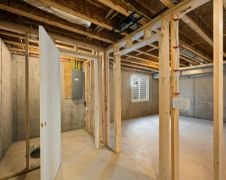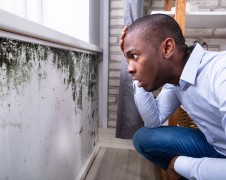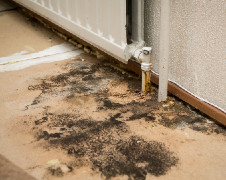Don’t Let Water Damage Lead to Mold
While they prefer warm, moist environments, mold spores exist nearly everywhere. It doesn’t take much for mold to grow, either. Even slight moisture can be enough to create the perfect breeding ground. Mold can grow in virtually any environment, as long as it has moisture and organic materials to feed on. 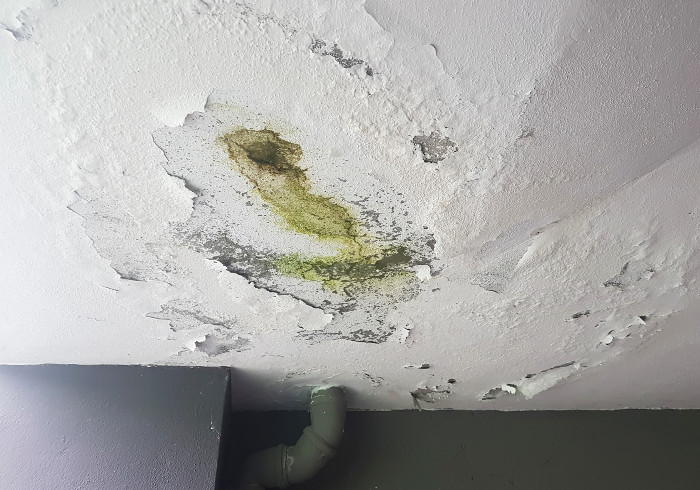 Every home has tons of organic matter – from the wood in your floors to the materials of your furniture. If any of these organic materials become damp, there’s a risk that mold will grow. When they get wet, mold spores don’t take long to multiply and thrive.
Every home has tons of organic matter – from the wood in your floors to the materials of your furniture. If any of these organic materials become damp, there’s a risk that mold will grow. When they get wet, mold spores don’t take long to multiply and thrive.
Water damage and mold go together. Mold can begin to grow almost immediately after moisture is present. That’s why it’s essential to prevent mold growth as much as possible. But does water damage always lead to mold? What are the odds that water leaks will lead to a mold infestation?
Does Water Damage Always Cause Mold?
Any amount of water – from roof leaks to flood damage–can lead to mold growth. However, that doesn’t mean that mold growth is 100% guaranteed. Many factors determine your risk of mold infestation. These factors include the amount of water and severity of the damage, what surfaces were affected, and how quickly they get cleaned up and dried out.
Water damage becomes a problem when no one handles it promptly. If you leave water to sit without cleaning or drying it effectively, the water can start to damage the affected areas. Water may cause your housing materials to break down, rot, or trap some of the moisture. This trapped water has nowhere to go and no way to evaporate, so mold spores have all the time they need to populate and reproduce.
If the water damage is severe, like in the case of a flood or other natural disaster, then you won’t have the tools and equipment to deal with it fast enough to minimize the risk of a mold infestation. We recommend calling a water damage restoration company to help you within 24 to 48 hours of when the damage occurred.
What Can I Do to Prevent Mold Growth?
Unfortunately, at least half of the homes in the United States have some form of mold. It looks unsightly and can lead to new or worsening health conditions. But you can take steps to minimize your risk of developing mold.
Monitor the humidity level inside your home and try to keep it below 50%. Water doesn’t have to be in its liquid state to cause mold growth. Water in its gaseous form also poses a risk.
Also, make sure your home is well ventilated because vapor can linger in the air for a long time. This isn’t as much of a problem if the air is well-circulated, because the moisture will more quickly disperse. If your HVAC system is clogged, it won’t circulate air as well, and caked-on dust might trap moisture and harbor mold inside your ducts.
Problems appear when the air in your home is stagnant, and water vapor has nowhere to go. This can increase your home’s humidity, and results in condensation. The affected areas aren’t limited to places you easily notice or have access to dry off. There could be standing water wherever this condensation occurs, allowing mold to start growing.
How to Detect Mold
Since mold grows quickly and there’s a chance that every type of moisture leads to mold, it’s essential to know the signs and catch it early. The growth of mold progresses rapidly, and it’s best to remove it as soon as possible. The longer it goes untreated, the more effort it will take to fix the problem.
Mold infestations often start inside the walls or under the flooring, so by the time you see it, there’s usually a more severe problem lurking underneath. It’s not enough to look for visible mold spots, though finding them does mean you have mold.
One of the leading non-visual indicators of a mold infestation is the odor. Most people associate a musty smell with basements and crawl spaces, often caused by water damage and mold growth. Pay attention to unexplained musty or stale smells, which can indicate a mold problem.
Another non-visual sign is new or worsening allergies or symptoms associated with mold. This includes sneezing, itchy, swollen, or clogged sinuses, coughing, difficulty breathing, skin irritation, rash, irritated eyes, wheezing, headache, and more.
What Do I Do About a Mold Problem?
If water has already been sitting in one place for a while, it’s not enough to remove the water. Seemingly dry areas can be a problem if they sustained water damage, even after you think you’ve dried them thoroughly. The water can seep into certain materials and surfaces, meaning that they are still retaining moisture.
If you know that an area of your home has sustained significant water damage, there’s a chance that a mold infestation is already present or is currently forming. Even if you don’t think you have a mold problem and don’t notice any signs, it’s still a good idea to call in a team of mold remediation experts within 24 to 48 hours of the water damage occurring to check for mold growth.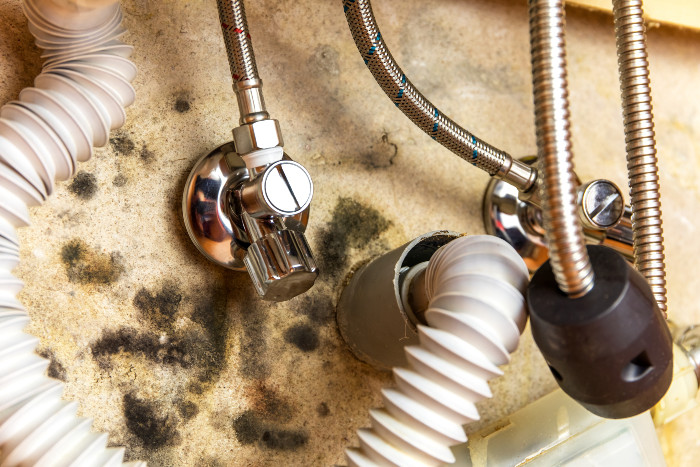 AdvantaClean is here to help with years of experience cleaning up water damage and helping our customers remediate their mold problems.
AdvantaClean is here to help with years of experience cleaning up water damage and helping our customers remediate their mold problems.
To work with mold remediation experts that care about you and have the skills it takes to get the job done right the first time, call AdvantaClean.
